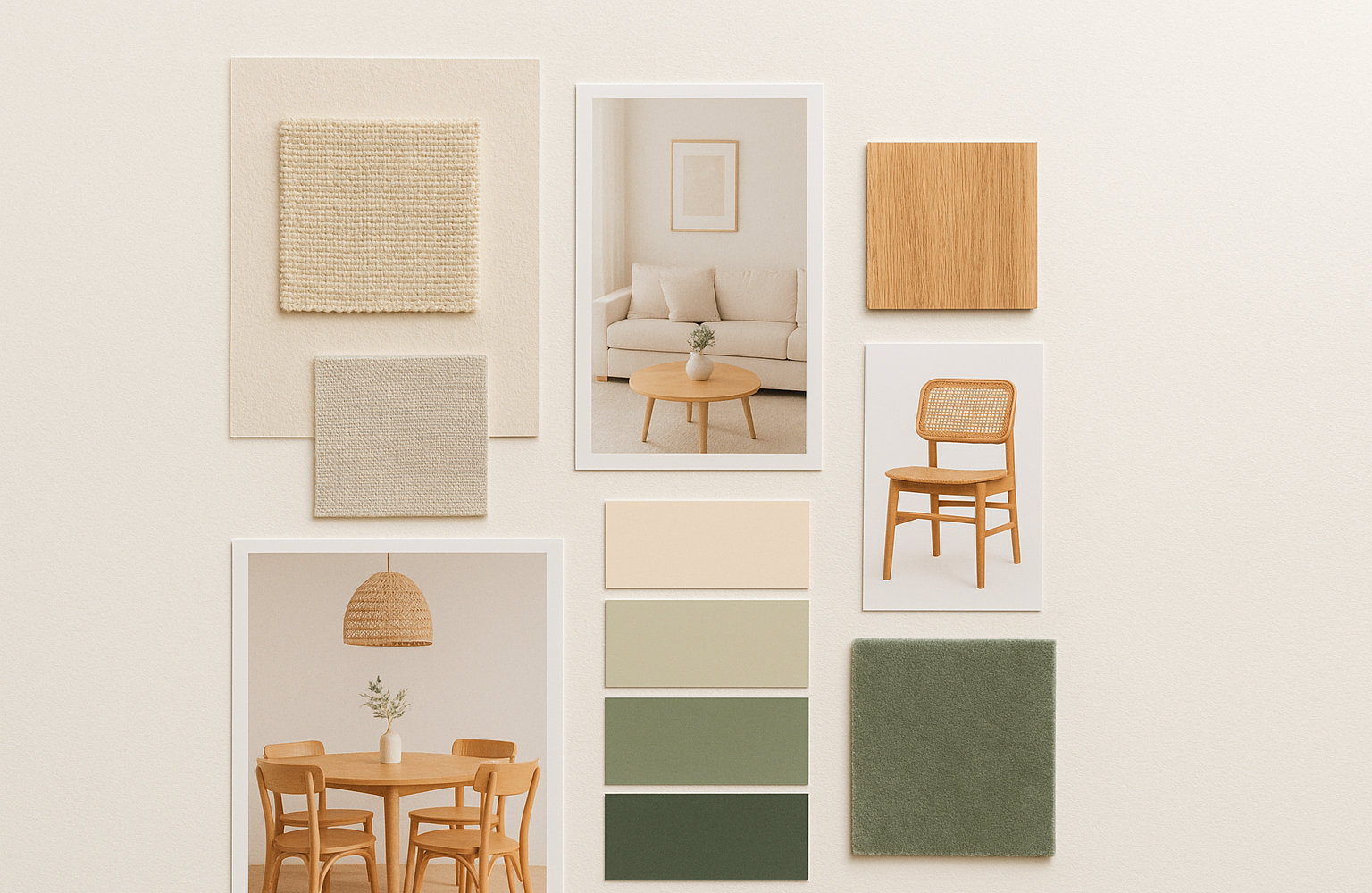
How to Make an Interior Project Mood Board: A Step-by-Step Interior Design Guide
A mood board is one of the most powerful tools in interior design, whether you’re planning a complete home makeover or updating just one room. Before you decide on paint colors, fabrics, or furniture, a mood board acts as a visual blueprint that organizes inspiration, textures, and styles into a cohesive vision.
In this blog, we’ll explain what a mood board is, why it’s essential, and how you can create one step by step.
What Is a Mood Board in Interior Design?
A mood board is a creative collage that combines images, materials, color swatches, and design elements to capture the mood and style of a project. Think of it as your design roadmap, a way to turn abstract ideas into a visual concept.
Mood boards can take different forms:
-
Digital Mood Boards – Created with tools like Canva, Adobe Express, Pinterest, or Figma.
-
Physical Mood Boards – Made using magazine cutouts, fabric swatches, wallpaper samples, and paint chips.
-
Hybrid Mood Boards – A mix of both digital and physical elements.
Why Mood Boards Are Important in Interior Design
Creating a mood board isn’t just about collecting pretty pictures. It serves a practical purpose throughout the design process:
-
Defines your overall style – modern, rustic, bohemian, or minimalist.
-
Ensures consistency across color palettes, textures, and finishes.
-
Acts as a visual guide when selecting furniture, flooring, and décor.
-
Helps you communicate ideas clearly to clients, vendors, or contractors.
-
Prevents costly mistakes such as mismatched tones or clashing patterns.
In short, a mood board is your design compass, keeping your project on track from start to finish.
What You Need to Make a Mood Board?
Tools for Digital Mood Boards
-
Inspiration sources: Pinterest, Instagram, and design blogs.
-
Design platforms: Canva, Adobe Express, Milanote, or Figma.
-
Product images: Saved photos or screenshots of furniture and décor.
-
Color palette tools: Coolors.co or Adobe Color.
Materials for Physical Mood Boards
-
Printed photos, catalogs, and magazine clippings.
-
Fabric, wallpaper, and flooring swatches.
-
Paint chips from hardware stores.
- Foam board or large paper, scissors, glue, and pins.
Step-by-Step Guide: How to Create a Mood Board
-
Define Your Goal
Decide whether your mood board is for a single room, a full home project, or just to explore a style. -
Collect Inspiration
Save images of furniture, color palettes, architecture, or décor that match your vision. -
Choose a Color Scheme
Stick to 3–5 main colors to keep the design balanced and cohesive. -
Add Materials and Textures
Include wood samples, fabric swatches, metal finishes, or flooring options to bring the design to life. -
Organize the Layout
Arrange your images and samples in a way that feels natural and visually pleasing. -
Edit and Refine
Remove any elements that don’t fit the mood or clash with the design direction. -
Finalize and Present
Save your digital mood board or mount your physical one—ready to guide you and share with clients or contractors.
Final Thoughts
A mood board is more than just a collage, it’s a strategic design tool that helps you visualize, plan, and communicate your ideas. Whether you’re a professional interior designer or a homeowner experimenting with a new style, mood boards can help you stay focused, avoid mistakes, and create a space that feels cohesive and inspiring.
So, before starting your next interior project, build a mood board—it’s the secret tool designers use to transform ideas into reality.